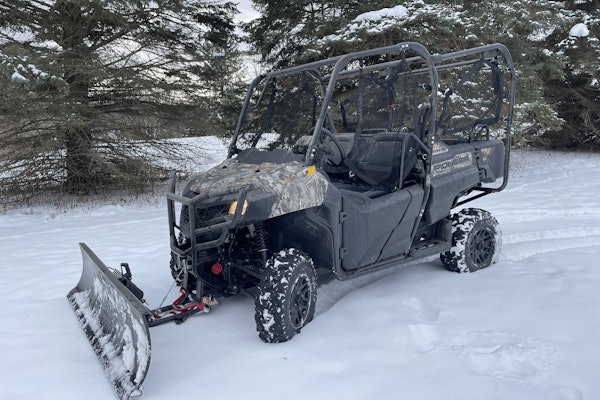It might seem strange seeing new construction and mining equipment arriving at dealerships with used tires. But consider those machines lucky – some are arriving with no tires at all.
The off-road tire industry is experiencing a severe shortage caused by unprecedented growth in worldwide markets – some 20 percent to 30 percent – during the past two years. This issue has prompted many tire manufacturers to increase production and open new facilities, all of which seems to have had little effect on the current situation.
“It’s simply an exploding demand,” says Manny Cicero, vice president of OTR sales for Bridgestone/Firestone.
Cicero says Bridgestone/Firestone and other tire manufacturers were caught in a “perfect storm” in which equipment sales in the United States grew dramatically at the same time as overseas demand increased unexpectedly.
“The developing world is developing,” he says. “China in growth mode is pretty awesome.”
Todd Ramsey, director of marketing for the Michelin Earthmover tire division, says the shortage results from a broad-based combination of supply and demand issues for the construction and mining industries. “There is no precedent for it in the history of Michelin Earthmover,” he says.
Unfortunately for OTR tire manufacturers, raw materials used in production are also in short supply. Production costs have jumped accordingly, in some instances up to 25 percent.
But the reason for the spike in raw material demand isn’t clear.
Otraco International, a global tire management services firm in Burswood, Australia, reported on the OTR tire shortage in June 2004. That study found the demand for minerals – specifically coal, iron ore, copper, nickel and bauxite – rose parallel to a surge in development in China, Russia and India.
The firm issued a new statement in March predicting the supply shortage will continue for at least the next two years. “Demand for earthmover tires continues to rise and there will be insufficient increase in output on the supply side to satisfy it,” the release stated.
To combat the OTR tire shortage, manufacturers are ramping up production to 24 hours a day, seven days a week. Some are also opening new plants at sites worldwide.
Bridgestone/Firestone will double the capacity of its Hofu, Japan plant, which produces small radial earthmover tires primarily for the Asian and European markets, at a cost of $130 million. The company is moving the expansion date from 2007 to mid-2006.
Meanwhile, Michelin announced in April the construction of a new earthmover tire plant in Brazil as a response to the “growing needs of the global earthmover market.” It will begin producing 25-inch to 49-inch tires in the second half of 2007.
“It’s a durable increase in the market, not a temporary issue,” Ramey says. “We [Michelin] believe it’s long term.”
However, the two- to three-year gap before current OTR tire production increases is of concern to equipment manufacturers that rely on a steady stream of tires for their machines.
Caterpillar acknowledges the shortage of OTR tires and is working with its suppliers and dealers to find a compromise in demand.
Dennis Slater, president of the Association of Equipment Manufacturers, says the OTR tire shortage and the tight steel market have plagued equipment manufacturers. But he says most companies are meeting their contractual obligations to dealers and customers.
And it’s this relationship with dealers that tire manufacturers are also hoping to preserve. Both Bridgestone/Firestone and Michelin are teaching dealers to help customers extend the life of current tires to avoid long waits for new ones.
They’re also stressing patience.
“While it may appear to those outside the industry that it’s a good problem to have, it’s not,” Cicero says.










